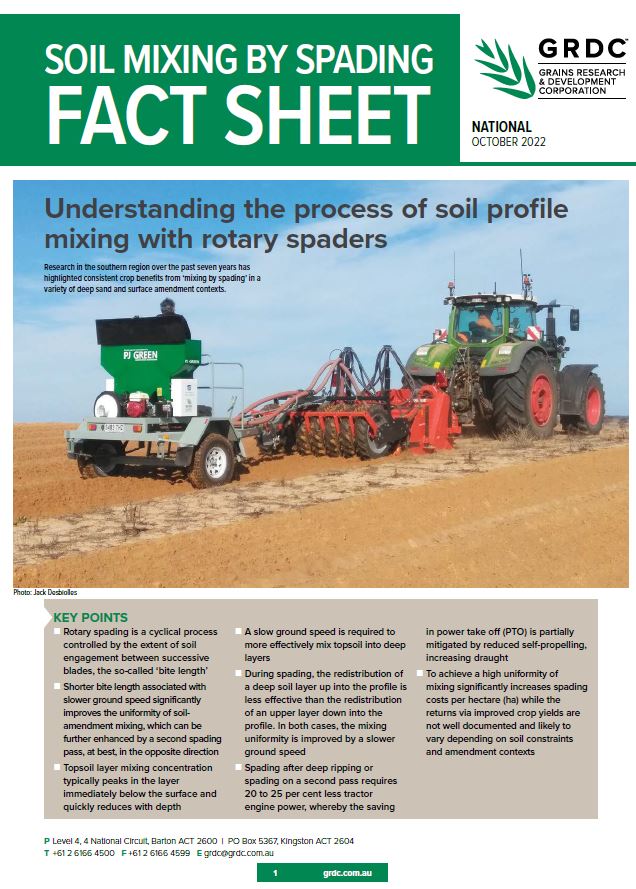Soil Mixing by Spading: National
Soil Mixing by Spading: National
Published: 21 Oct 2022
Understanding the process of soil profile mixing with rotary spaders
Key points
- Rotary spading is a cyclical process controlled by the extent of soil engagement between successive blades, the so-called ‘bite length’
- Shorter bite length associated with slower ground speed significantly improves the uniformity of soil-amendment mixing, which can be further enhanced by a second spading pass, at best, in the opposite direction
- Topsoil layer mixing concentration typically peaks in the layer immediately below the surface and quickly reduces with depth
- A slow ground speed is required to more effectively mix topsoil into deep layers
- During spading, the redistribution of a deep soil layer up into the profile is less effective than the redistribution of an upper layer down into the
profile. In both cases, the mixing uniformity is improved by a slower ground speed - Spading after deep ripping or spading on a second pass requires 20 to 25 per cent less tractor engine power, whereby the saving in power take off (PTO) is partially mitigated by reduced self-propelling, increasing draught
- To achieve a high uniformity of mixing significantly increases spading costs per hectare (ha) while the returns via improved crop yields are not well documented and likely to vary depending on soil constraints and amendment contexts.
Download PDF
Region: National
GRDC Project Code: CSP1606-008RMX, USA1903-002RTX,

